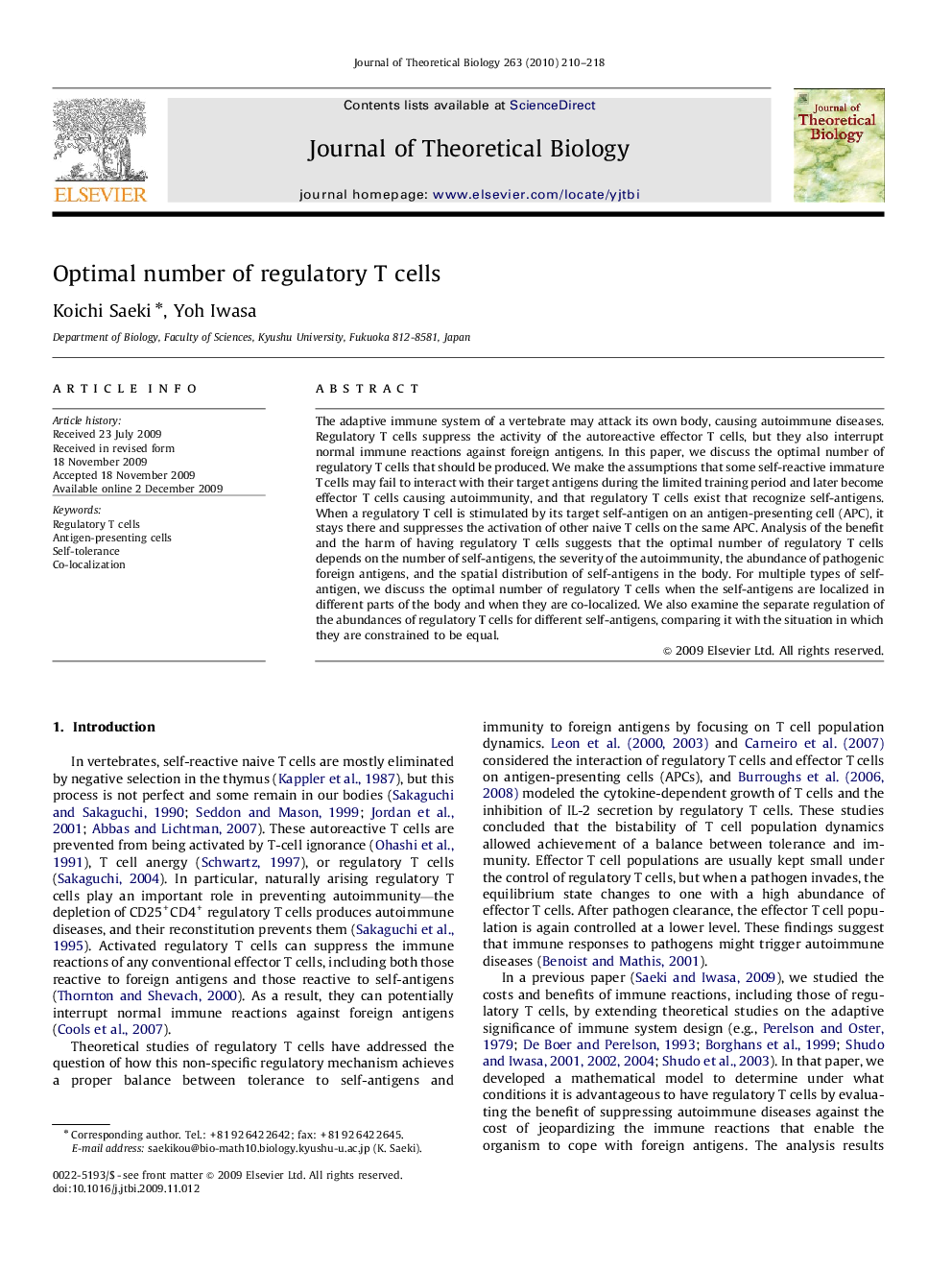| کد مقاله | کد نشریه | سال انتشار | مقاله انگلیسی | نسخه تمام متن |
|---|---|---|---|---|
| 4497579 | 1318942 | 2010 | 9 صفحه PDF | دانلود رایگان |
عنوان انگلیسی مقاله ISI
Optimal number of regulatory T cells
دانلود مقاله + سفارش ترجمه
دانلود مقاله ISI انگلیسی
رایگان برای ایرانیان
کلمات کلیدی
موضوعات مرتبط
علوم زیستی و بیوفناوری
علوم کشاورزی و بیولوژیک
علوم کشاورزی و بیولوژیک (عمومی)
پیش نمایش صفحه اول مقاله

چکیده انگلیسی
The adaptive immune system of a vertebrate may attack its own body, causing autoimmune diseases. Regulatory T cells suppress the activity of the autoreactive effector T cells, but they also interrupt normal immune reactions against foreign antigens. In this paper, we discuss the optimal number of regulatory T cells that should be produced. We make the assumptions that some self-reactive immature T cells may fail to interact with their target antigens during the limited training period and later become effector T cells causing autoimmunity, and that regulatory T cells exist that recognize self-antigens. When a regulatory T cell is stimulated by its target self-antigen on an antigen-presenting cell (APC), it stays there and suppresses the activation of other naive T cells on the same APC. Analysis of the benefit and the harm of having regulatory T cells suggests that the optimal number of regulatory T cells depends on the number of self-antigens, the severity of the autoimmunity, the abundance of pathogenic foreign antigens, and the spatial distribution of self-antigens in the body. For multiple types of self-antigen, we discuss the optimal number of regulatory T cells when the self-antigens are localized in different parts of the body and when they are co-localized. We also examine the separate regulation of the abundances of regulatory T cells for different self-antigens, comparing it with the situation in which they are constrained to be equal.
ناشر
Database: Elsevier - ScienceDirect (ساینس دایرکت)
Journal: Journal of Theoretical Biology - Volume 263, Issue 2, 21 March 2010, Pages 210-218
Journal: Journal of Theoretical Biology - Volume 263, Issue 2, 21 March 2010, Pages 210-218
نویسندگان
Koichi Saeki, Yoh Iwasa,